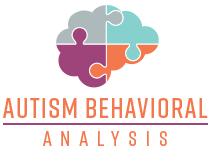What is autism vs. down syndrome? Down syndrome (DS or DNS) and autism are developmental conditions that can be permanent. The two are distinct ailments with different symptoms, causes, manifestations, treatments, and medications. For instance, autism behavioral analysis can be the first step towards autism treatment, but therapy for down syndrome usually begins with early intervention and physical therapy.
What Is Autism?
The standard medical term for autism is an autism spectrum disorder (ASD). It’s a neurological and behavioral condition that manifests in features that include persistent challenges in oral or nonverbal communication, motor skills, and social interactions. With the answer to the question, “What is Autism?,” families can find the right support and treatment programs.
The most common symptoms of autism include:
- Challenges in interpreting other people’s thoughts and feelings
- Impaired reciprocal social interaction
- Difficulty sustaining a conversation
- Inability to comprehend or interpret social cues, such as facial expressions
- Inability to regulate emotion
- Sleeping or eating abnormalities
- Compulsive or ritualistic behaviors, and a restricted repertoire of activities or interests
What Is Down Syndrome?
Another name for Down syndrome is trisomy 2. Down syndrome is genetic, and medical experts believe that the third copy of chromosome 21 is responsible for triggering it. Adults with Down syndrome display behaviors that are typical of eight or nine-year-olds. However, with strong family support and treatment, indiviudals can live a healthy life.
The main features of Down syndrome include poor muscle tone, delayed growth, and lower IQ. But the most common symptoms of the condition include a bulging tongue, limp muscles, vision and hearing disorder, immune deficiency, obesity, obstructive sleep apnea, short neck, and upwards-slanting eyes.
The Causes of Autism Vs. Down Syndrome
There are various causes of autism, and the illness mainly stems from developmental issues in the brain. Nevertheless, autism is associated with several underlying health disorders, such as:
- Hereditary infections in a pregnant mother, for instance, German measles (Rubella), Toxoplasmosis, and Cytomegalovirus (CMV)
- Lack of enzymes necessary for metabolic activity, for example, failure to treat phenylketonuria (PKU)
- Fragile X Syndrome and Tuberous sclerosis, which are rare genetic disorders
- Brain inflammations, including bacterial meningitis and Encephalitis, which are neurological syndromes that occur after birth
On the other hand, Down syndrome arises when an abnormality in cell division occurs, resulting in an extra— partial or full—replica of genetic information from chromosome 21. The additional chromosome can cause defects as physical features and brain develop. There is no medical link of Down syndrome to anything in the internal environment or parent’s faults.
Treatment for Autism and Down Syndrome
In both cases of autism vs. down syndrome, treatment programs involve specialists, including endocrinologists, geneticists, and cardiologists—depending on the needs of the patient.
The standard autism treatment programs include applied behavior analysis (ABA), speech therapy (ST), social skills training (SST), cognitive-behavioral therapy (CBT), sensory integration therapy (SIT), and occupational therapy (OT).
Antidepressants can also be beneficial for managing conditions such as anxiety, depression, and panic attacks. Additionally, some people with ASD have epilepsy as well; thus, anti-seizure medications can help.
For Down syndrome, the most useful treatments include early Intervention, speech therapy, educational & occupational therapy, and behavioral therapy for coping with the social and emotional challenges
The most commonly used medications for Down syndrome are Piracetam and Amino acid supplements.
The Takeaway
If you have a loved one who is struggling with autism vs. down syndrome, seek professional help as early as possible. There are many targeted interventions for autism that can ease the symptoms of the condition.







